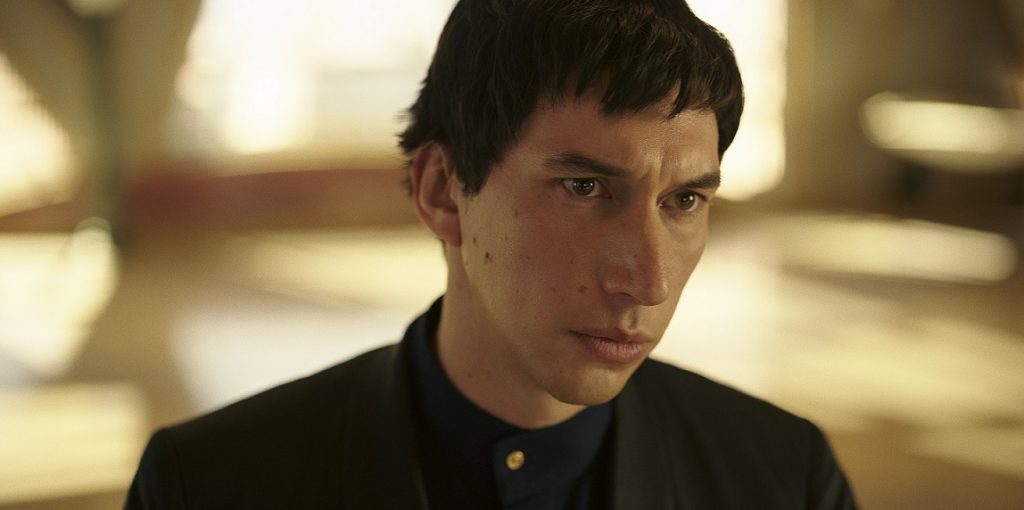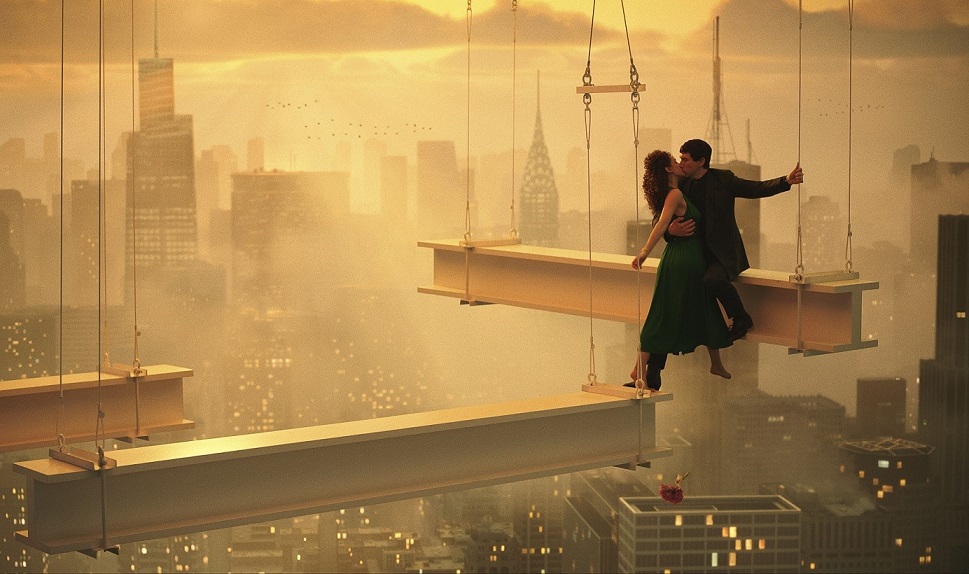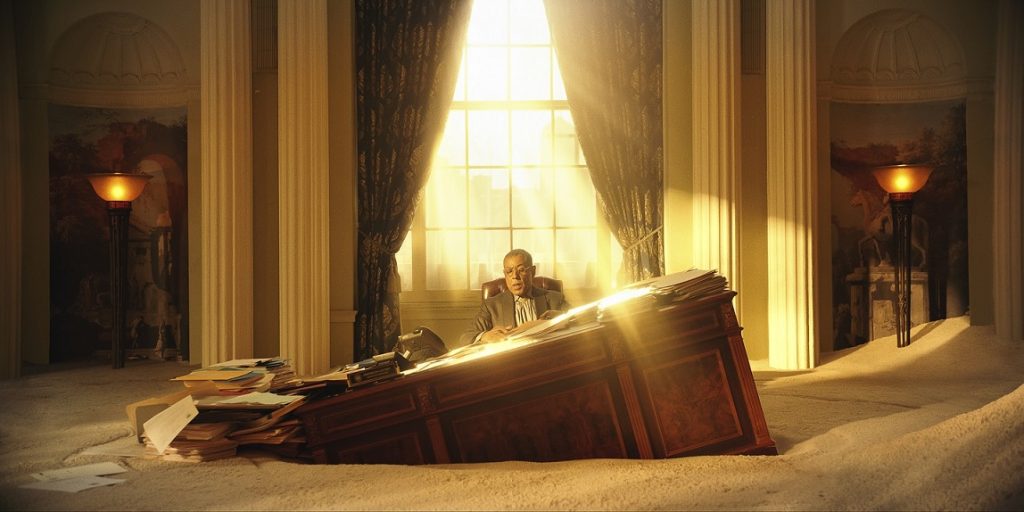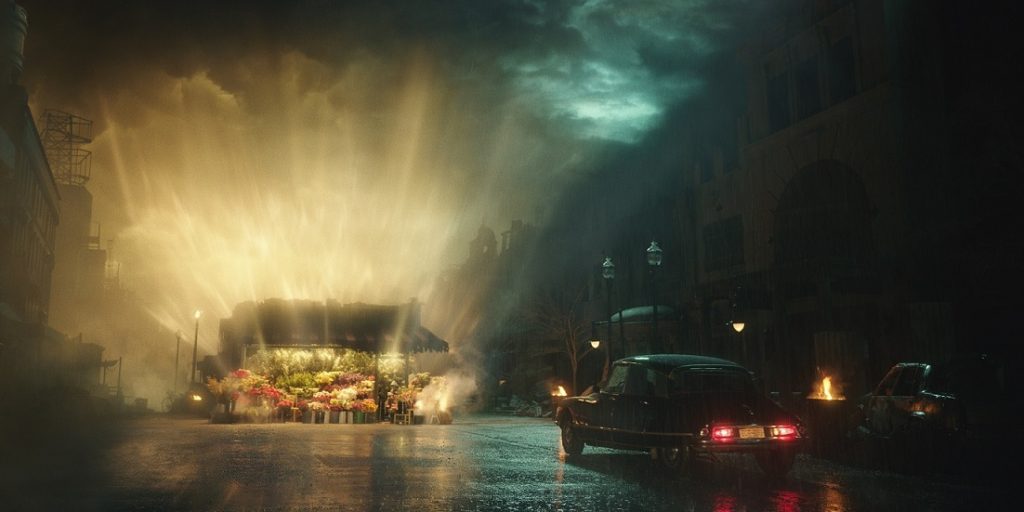
Running Time: 138 minutes
This film will open exclusively in theaters and on IMAX screens on September 27th.
For decades, Francis Ford Coppola has been following the beat of his own drummer, from commercially successful ventures like The Godfather series, Apocalypse Now, The Outsiders and Bram Stoker’s Dracula, to smaller and more intimate films including The Conversation. For the past 20 years, he’s been working on even more unique and esoteric independent projects like Youth Without Youth and Tetro, which have garnered a variety of responses. If you’ve read the papers recently, then you may be aware that his latest venture is Megalopolis, a self-financed opus with an all-star cast.

This overstuffed but intriguing tale takes its inspiration from history, specifically the Fall of the Roman Republic. This story is set in the city of New Rome, which finds itself in a major crisis. The ruling class (whose fashion sense has ties to the Roman Empire) are living a life of wild excess while the angry public live in poverty. Cesar Catalina (Adam Driver) is a self-obsessed city architect with bold ideas for a future utopia that will benefit all. He also has a strange gift… the ability to briefly pause time.
City Mayor Cicero (Giancarlo Esposito) doesn’t believe in any kind of paradise on Earth and strives to maintain the status quo. This is of great help to the wealthiest and most powerful family in town (who also happen to be related to Cesar). Members include Hamilton Crassus III (Jon Voight), as well as his power-hungry grandson Clodio (Shia LaBeouf). We also witness scheming journalist Wow Platinum (Aubrey Plaza) attempting to ingratiate and join the elites. But when Mayor Cicero’s daughter Julia (Nathalie Emmanuel) falls for Cesar and becomes his muse, it seems there may be hope for the future.

Clearly, there was no interference in the creation of this feature, which admittedly leads to a few issues. There are several other characters and so many plot elements in this film that it is easy to get lost and important characters disappear for significant chunks of time. Some bits include Cesar’s invention of a strange, almost organic metallic substance that he hopes to use in his new designs (the screenplay never really gets into much detail about the material, but it’s probably for the best). The script is so busy that the plot requires narration from Cesar’s driver Fundi Romaine (Laurence Fishburn). There is constant jumping between storylines and elements get lost in the shuffle. Early scenes do feel stilted and there are many lengthy, perhaps overly earnest declarations from the protagonist.
As such, one might assume so far that I didn’t care for the picture. But a funny thing happened as I was watching it. After the first act, this reviewer became accustomed to the exaggerated voices and rhythms of the characters. And the imagery on display is consistently spectacular to behold. Whether Cesar is standing atop the Chrysler Building, driving past gigantic statues of Lady Justice falling over and other figures crumbling in defeat, as well as surreal visions, or even the designs for the new utopia, all visual elements are gorgeously shot by cinematographer Mihai Mălaimare Jr. (The Master, Jojo Rabbit).

There are also scenes between cast members that do come to life. Bits involving an arena audience and wealthy, loafing attendees in a Coliseum-like environment cheering on a performer really do create interesting connections between today’s celebrity obsessed-culture and crowds in ancient Rome. So do the avaricious political moves and the sinister conspiracy in which characters attempt to take complete control of the city. It’s easy to see allusions to events currently taking place and the horrors of where it all could ultimately lead.
Still, despite all the serious goings on, the movie does have a sense of humor. Admittedly, some of these sections may be misinterpreted as being more serious than intended. But the more exaggerated moments, including the fates of a couple of characters through bizarre (but thematically consistent) means, raised a smile on the part of this viewer.

Yes, the movie has its own tone and does not follow Hollywood formula. In some respects, it feels like Coppola’s later arthouse work with experimental elements, only this time with a bigger budget. Upon first viewing, the story is confounding at several points. But, in my opinion, this is also a wonderful thing. It is something we don’t see anymore, and that is a very distinctive personal vision from a man who is following the beat of its own drummer. For all of its eccentricities, the film is never boring, ultimately ending on a constructive, sweet and hopeful note. Personally, I would be interested in visiting Megalopolis again. And this time, I’ll try not to worry about story structure and instead let the events and mood take me along for the ride.


